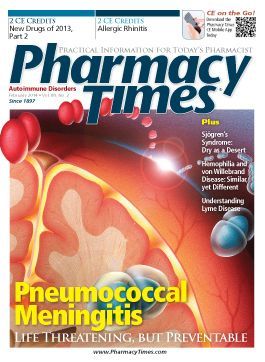Publication
Article
Pharmacy Times
Case Studies
Case studies involving hot flashes and malaria prophylaxis.
Case 1
DG is a white 60-year-old postmenopausal woman who comes to the clinic complaining of hot flashes. She is otherwise healthy, taking only a daily multivitamin. She has no children and lives with her husband. You look at her chart and find that she had breast cancer 12 years earlier.
As the pharmacist, what would you recommend to DG’s physician about treatment options for her hot flashes?
Case 2
LH is a 35-year-old woman who approaches your pharmacy counter to inquire about malaria prophylaxis. She explains that she will be taking a last-minute trip with her husband to South Africa for a 1-week safari. They leave in 3 days, and she knows they will be traveling to a malariaendemic area and will need medication for prevention. LH wants the pharmacist to recommend a medication that she can request when she sees her primary care physician later that day. She heard that one of the medications can cause strange and vivid dreams and is concerned about this potential adverse effect.
What do you tell LH about the available agents for malaria prophylaxis?
ANSWERS
Case 1: Seventy-five percent of women older than 50 years will experience vasomotor symptoms (VMSs) such as hot flashes and night sweats. Many FDA-approved medications are available for treating VMSs, and most contain estrogen alone or in combination with a progestin. The American Association of Clinical Endocrinologists, American College of Obstetricians and Gynecologists, and the North American Menopause Society recommend hormone replacement therapy (HRT) prescribed at the lowest effective dose and for the shortest duration possible in women for whom the benefits outweigh the risks.
HRT is the most effective and well-studied treatment option for VMSs; however, due to DG’s history of breast cancer, it is contraindicated. Therefore, nonhormonal therapies and/or lifestyle changes are an appropriate treatment option for relief of DG’s VMSs. In June 2013, the FDA approved paroxetine (Brisdelle) 7.5 mg once daily at bedtime as the first nonhormonal treatment option for VMSs.
Lifestyle changes are also recommended for all women with VMSs associated with menopause. Women should be encouraged to wear loose-fitting, lightweight, cotton clothing; avoid hot foods and drinks; and dress in layers to regulate their core body temperature. Regular physical activity, relaxation techniques, weight loss, and smoking cessation have also been effective in alleviating VMSs.
Case 2: Malaria is caused by 1 of 4 protozoan species transmitted by the bite of an infected mosquito. The risk of acquiring malaria depends on the region, season, and type of travel. Travelers with a high risk of infection should receive prophylaxis and use mosquito-avoidance measures such as remaining in well-screened areas, using mosquito nets, wearing protective clothing, and using effective insecticide spray.
Six chemoprophylaxis agents are currently available for malaria prophylaxis: atovaquone/ proguanil, chloroquine phosphate, hydroxychloroquine sulfate, doxycycline, mefloquine, and primaquine. All recommended agents involve the patient taking the medication before, during, and after travel to malaria-endemic areas. Each medication comes with its own dosing regimen, duration, and side effects, which should be considered when choosing an agent. The Centers for Disease Control and Prevention has a list of the recommended drugs and the comparable efficacy of each agent in every country (http://phrmcyt.ms/1eUKpYv), which can help in deciding which malaria prevention medication to use.
Atovaquone/proguanil (Malarone) is the agent most commonly associated with vivid dreams. Because chloroquine phosphate, hydroxychloroquine sulfate, and mefloquine require treatment to be started at least 1 week prior to arrival in the endemic area, they are not options for LH. If LH will not take atovaquone/proguanil because of the potential for vivid dreams, doxycycline or primaquine is the remaining option because prophylaxis with either agent should begin 1 or 2 days before travel to malarious areas. Patients who are going to take primaquine should have a documented normal G6PD level before starting the medication. For this reason, doxycycline administered as 1 tablet daily, beginning 1 or 2 days before travel, and continued for 4 weeks after travel may be the best choice.
function showAnswer() {document.getElementById("answer").style.display = 'block';document.getElementById("link").style.display = 'none';}
Dr. Mearns is health economics and outcomes research fellow at Hartford Hospital Evidence-Based Practice Center, and Dr. Coleman is professor of pharmacy practice, as well as codirector and methods-chief at Hartford Hospital Evidence-Based Practice Center, at the University of Connecticut School of Pharmacy.







